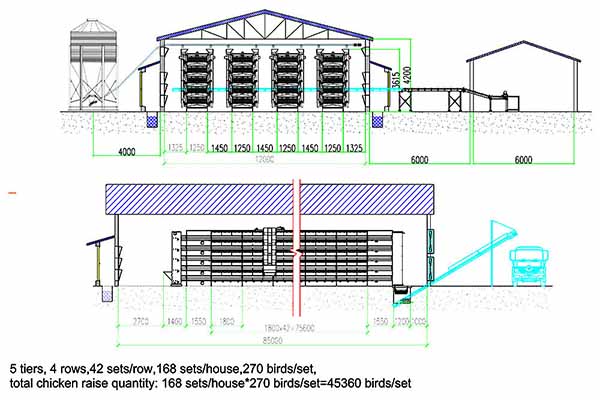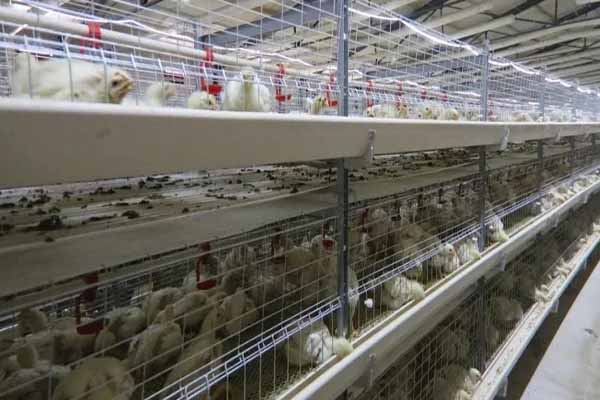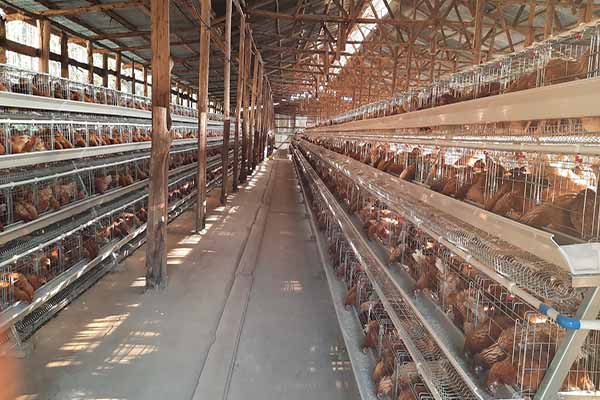The Broiler Chickens in the Cage: An In-Depth Analysis of Modern Poultry Farming Practices
Time : 2025-07-02
Broiler chickens in the cage represent a significant segment of the modern poultry industry. This article delves into the various aspects of raising broiler chickens in caged systems, focusing on the advantages, challenges, and the role of professional poultry farming equipment.
Introduction

Broiler chickens are a breed of domesticated fowl specifically bred and raised for meat production. The majority of broiler chickens are reared in caged systems due to their efficiency in meat production. This article aims to provide a comprehensive overview of the caged broiler chicken farming practices, highlighting the use of professional poultry farming equipment.
Benefits of Caging Broiler Chickens
1. Space Efficiency: Caging allows farmers to maximize the space available on their farms. This is crucial in areas where land is scarce.
2. Sanitation: Caged systems are easier to maintain and clean compared to free-range setups. This reduces the risk of disease outbreaks among the chickens.
3. Consistency in Meat Quality: Caged broilers are subject to a controlled environment, ensuring consistent meat quality.
4. Economic Efficiency: The use of caged systems can lead to reduced feed costs and better overall economic returns.
can lead to reduced feed costs and better overall economic returns.
Challenges of Caging Broiler Chickens
1. Animal Welfare Concerns: Caging can lead to stress and discomfort for the chickens, prompting animal welfare concerns.
2. Air Quality: High-density caging can result in poor air quality, which affects the health of the chickens and the operators.
3. Equipment Investment: Establishing a caged broiler system requires significant investment in poultry farming equipment.
Professional Poultry Farming Equipment
1. Feeding Systems: Automatic feeding systems ensure consistent and controlled feed intake, which is crucial for broiler growth. These systems can include augers, conveyors, and feeders that are designed to optimize feed distribution.
2. Water Systems: Access to clean water is essential for broiler chickens. Professional poultry farming equipment includes nipple waterers, cups, and automatic watering systems that maintain water quality and pressure.
3. Ventilation Systems: Proper ventilation is vital for maintaining air quality and preventing heat stress. Equipment such as fans, curtains, and air exchangers are used to manage the airflow in the caged systems.
4. Lighting Systems: Light management is critical for controlling the growth rate and behavior of broilers. Professional lighting systems can be programmed to simulate natural daylight cycles.
5. Environmental Control Units: These units provide precise control over temperature and humidity, ensuring optimal conditions for broiler growth.
humidity, ensuring optimal conditions for broiler growth.
Best Practices in Caged Broiler Chicken Farming
1. Sanitization Protocols: Regular sanitization of the cages and equipment is essential to prevent disease spread.
2. Monitoring Systems: The use of monitoring systems can help farmers track the health and performance of their broilers, allowing for timely interventions.
3. Health Management: Implementing a robust health management program is crucial for reducing the risk of disease outbreaks.
4. Training Staff: Proper training of farm staff on the use and maintenance of poultry farming equipment is essential for optimal performance.
Conclusion
The broiler chickens in the cage have become a cornerstone of modern poultry farming. While caging offers numerous benefits, it also poses challenges that require the use of professional poultry farming equipment and best practices. By carefully managing these aspects, farmers can maximize the efficiency and profitability of their broiler operations.
Tags:











